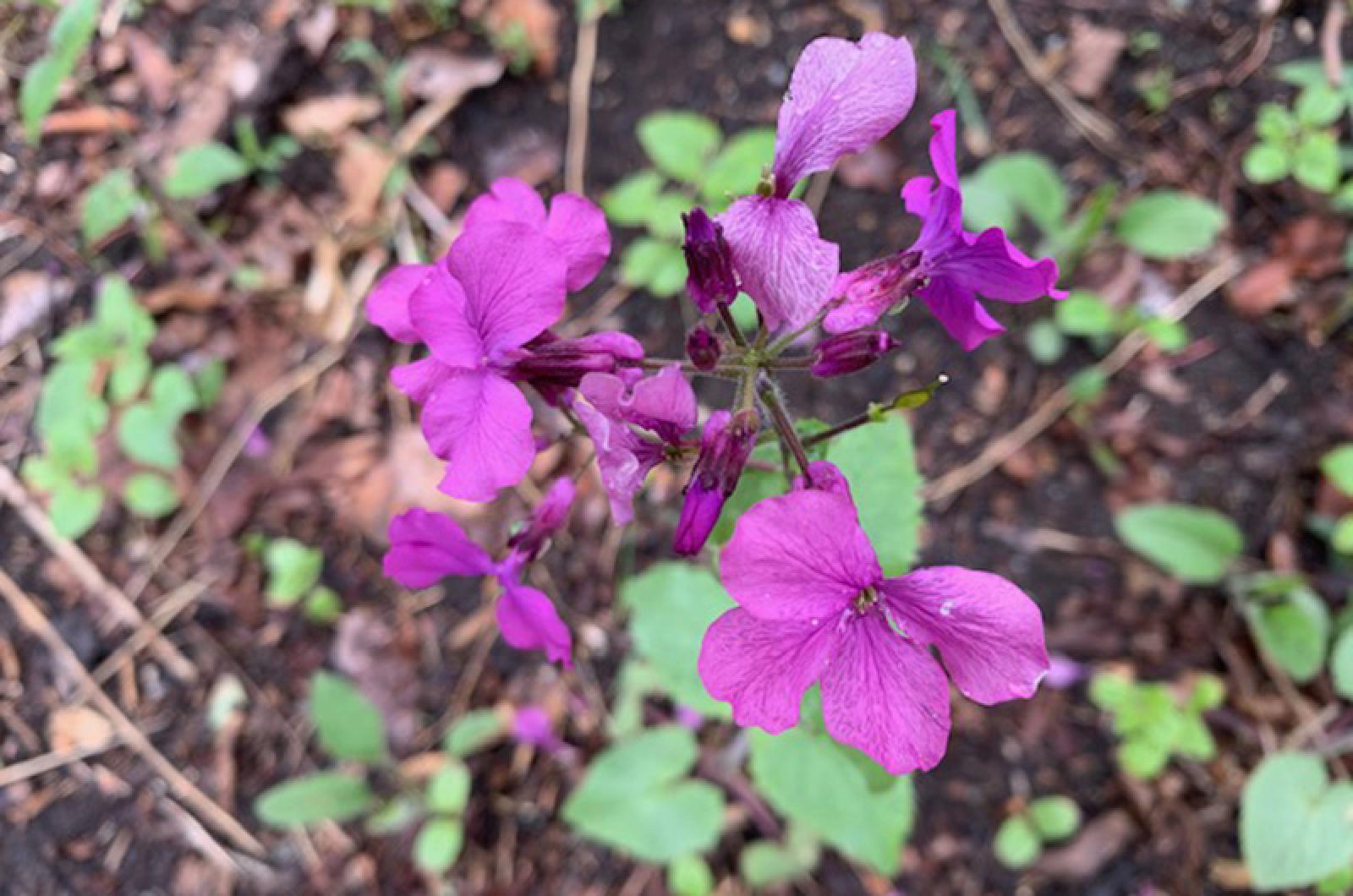Honesty is a lonely word if you believe Billy Joel, but is definitely not a lonely plant.
Considered invasive due to its fruitful nature in some places, honesty, the plant, famously spreads easily and readily from unique circular seeds held in distinctive pods that will appear later in the season. Where you find one, you will find many more, as they multiply quickly, self-seeding to supremacy.
You many know this plant by its other names, including moneywort, money plant, silver dollars, money-in-both-pockets, penny flower and, of course, its scientific name Lunaria annua, referring to its moon-shaped seed pods. These translucent seed containers reveal the seeds, and in that truth is the derivation of the term honesty plant.
Other names in far-away places connect it to a religious history and biblical story. Hailing from central and southern Europe, and becoming naturalized in the United States, honesty is well established locally, now blooming its purple flowers prodigiously. The French call it monnaie du pape, or pope’s money, while the Danes have christened it judaspenge or judaspenning, both translated as coin of Judas. The story goes that the disciple Judas Iscarlot, one of the 12 apostles, sold out Jesus for 30 pieces of sliver.
Monsters of all types are reportedly repelled by this plant, and lore includes promises of wealth, money and sincerity for those that possess it. Its value extends to wildlife, with the cabbage white caterpillar feasting on its foliage. People seem to love it too, and the Royal Horticultural Society of Britain gave it the prestigious Garden Merit award. But back to those seedcases, which are perhaps the most priceless part of this plant. During modern times, they have been used decoratively in flower arrangements and crafts, though in the Victorian era artists with a very steady hand and grand imagination in miniature painted scenes on these protective pouches.
These cases provide a botanic and linguistic lesson — this type of long seed pod, typical of plants in the mustard family, can be either a silique or a silicle. If the length of the fruit capsule is two times more than the width, you have a silique, however, if the desiccated container is less than two times as long as they are wide you have a silicle.
No matter what you call it, don’t call it late for supper. According to some sources all parts of the plant are edible, which is not surprising due to its Brassicaceae family name — think mustard and crucifers. The flowers can be added to salads, leaves as raw or cooked greens, and the seeds, when ground and soaked in water, can be used as a substitute for mustard.
The plant honesty is not too difficult to find, even while Billy Joel croons otherwise about the trait. The trick, for both, is knowing how to find and cultivate them.
Suzan Bellincampi is director of Felix Neck Wildlife Sanctuary in Edgartown and the Nantucket Wildlife Sanctuaries. She is also the author of Martha’s Vineyard: A Field Guide to Island Nature and The Nature of Martha’s Vineyard.







Comments
Comment policy »